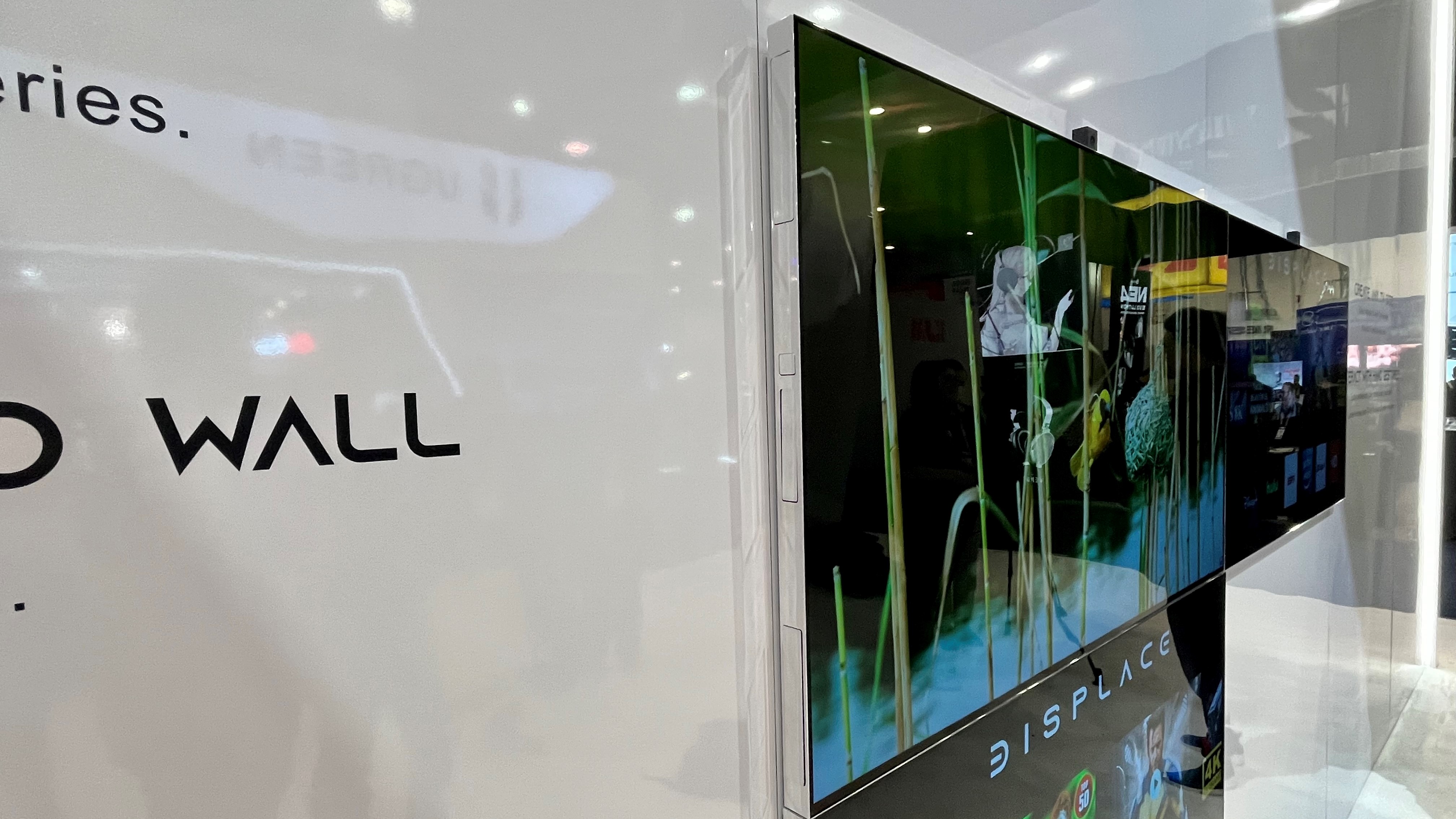The world’s first fully wireless OLED TV is completely off the hook
A TV that literally cuts the cord

Wireless TVs aren’t a completely sci-fi idea – LG is showing a 97-inch wireless OLED at CES 2023, where it’s one of the more attention-grabbing items in the company’s crowded booth. But far off in a quiet, isolated corner of the Las Vegas Convention Center’s Central Hall is something perhaps more intriguing: a fully wireless 55-inch 4K OLED TV.
Completely wireless as in no wires – not even a power cable (which LG’s wireless 97-inch OLED has). Displace TV has created a display that runs on four rechargeable lithium ion batteries, which gives you a month of six hours a day viewing before a recharge is required. The TV, wireless base station, batteries, and charger are priced at $3,000 for the lot, and you can buy four TVs from the company for $9,000.
Why would you want four wireless Displace TVs? Because you can combine them together to create a 110-inch 8K TV. The sets have top mounted cameras that track hand movements, and by using a pinch-and-expand gesture, you can get an image being displayed on one of the screens to scale up and fill all four. (The Displace TV wireless base station, which streams to the displays via Wi-Fi 6E, has multiple video inputs to enable simultaneous viewing of different sources, and it also has a smart TV interface.)

Witnessing that pinch-and-expand function was sort of mind-blowing, but what was even cooler was getting to watch a TV being mounted to a wall.
Displace TV’s proprietary active loop vacuum tech, which draws low-power from the batteries, is used to affix the set to a surface without any mounting hardware – you simply grab hold of latches on the panel’s sides, pull, and the vacuuum seal is released. You can then carry the lightweight TV (approximately 16 pounds) to another room, push to mount it securely on the wall, and resume viewing.
As impressed as I was with Displace TV in action, there are some downsides to the current version. When multiple TVs are grouped together there is a visible gap between panels. This is a far cry from the seamless images you get with 100-plus-inch MicroLED displays, which are also put together from multiple panels. The TVs also have a highly reflective screen surface – something that was easy to see on a trade show floor with bright overhead lights.
But considering the cutting-edge tech here, and the comparatively low price you’re paying for a 110-inch 8K OLED TV (LG’s 97-inch 4K OLED costs $25,000, and it uses wires), Displace TV’s offering is quite the deal.
Sign up for breaking news, reviews, opinion, top tech deals, and more.
- Check out all of TechRadar's CES 2023 coverage. We're bringing you all the breaking tech news and launches, everything from 8K TVs and foldable displays to new phones, laptops and smart home gadgets.

Al Griffin has been writing about and reviewing A/V tech since the days LaserDiscs roamed the earth, and was previously the editor of Sound & Vision magazine.
When not reviewing the latest and greatest gear or watching movies at home, he can usually be found out and about on a bike.